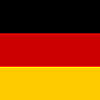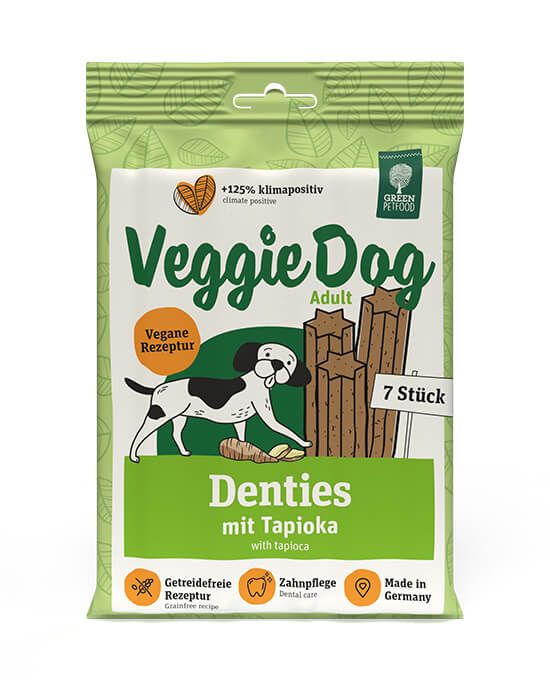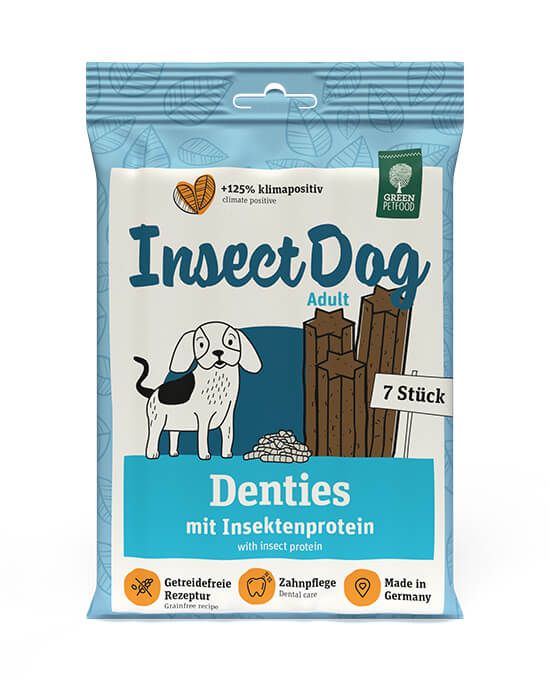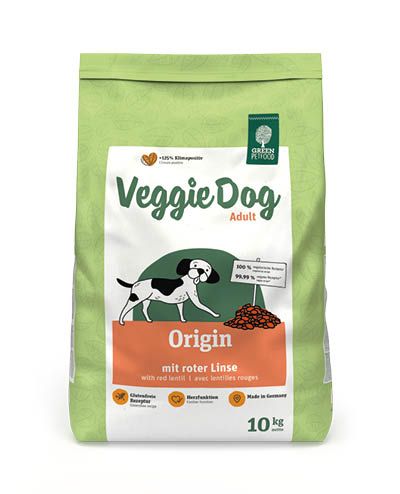How to clean your dog’s teeth – how important is dental hygiene in dogs?
A dog’s teeth represent a handy set of tools with all sorts of applications: pincers, a knife, scissors, a weight carrier, shredder, lever and weapon all in one. A true miracle of nature, which once ensured the survival of the wild predators that are the ancestors of today’s dogs.
Survival is less of an issue these days, but a dog nonetheless relies greatly on its teeth: breaking food into smaller pieces, gnawing and playing all depend on a dog having great teeth. That’s why dental care is just as important for dogs as it is for us. But what exactly does this involve? Is it necessary to clean your dog’s teeth? And what role does food play in canine dental hygiene? In this guide, we want to really get our teeth stuck into these issues.
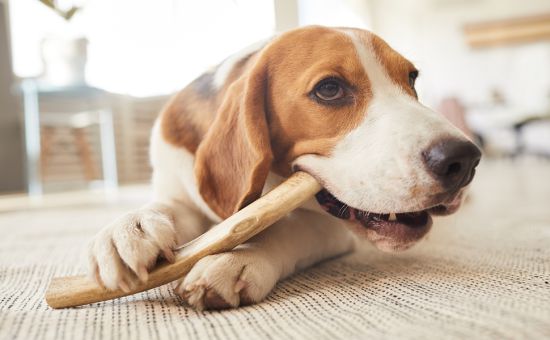
Lots of dogs have poor dental hygiene
Dental problems in dogs are more widespread than most people assume. Without a good dental care routine, plaque will build up on your dog’s teeth. And that can soon cause problems. Consequences of poor dental care in dogs include:
- tartar
- gum inflammation
- bad breath
- exposed roots
- loss of teeth
- organ disease due to bacteria
If you want to eradicate pathogenic bacteria in your dog’s mouth, you will need to get to work. Ideally using a toothbrush as this is the ideal device to combat tooth decay in dogs too.
How to clean your dog’s teeth: the number 1 dental care priority for dogs
Brushing a dog’s teeth is just as effective as it is for humans. When you clean your dog’s teeth, it removes plaque and prevents tartar, periodontitis and tooth decay. The best method is to use a special dog toothbrush, or alternatively a tooth cleaning cloth, finger cot or human toothbrush with very soft bristles.
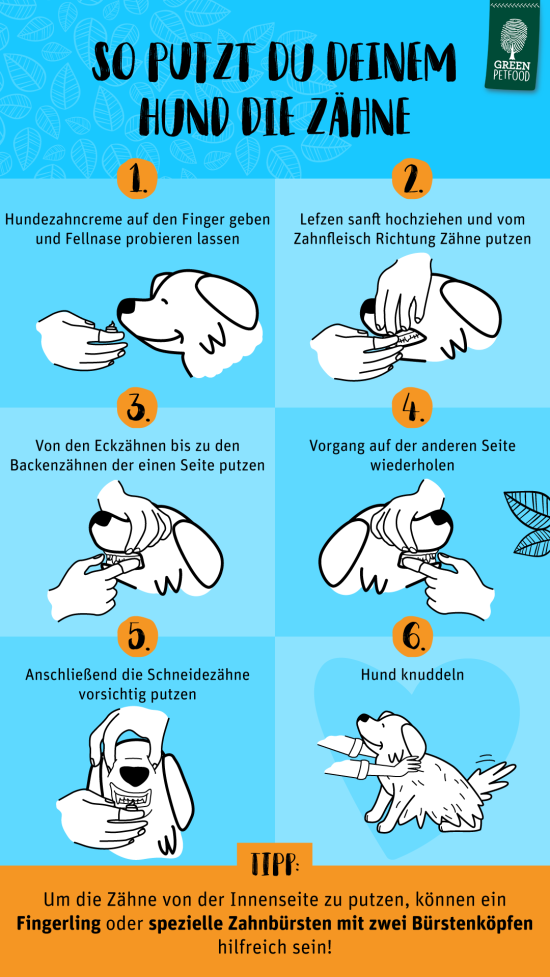
The correct technique: how to brush a dog’s teeth
- Put some dog toothpaste on your finger and let your dog try some.
- Carefully lift the lips and brush the teeth moving away from the gums.
- Clean from the canines along to the molars on one side (outside only).
- Repeat this process on the other side.
- Carefully clean the incisors.
- Give your dog a cuddle.
How can you get your dog used to teeth brushing?
Vets recommend starting early and getting your puppy used to teeth brushing, for example by gently opening the mouth and carefully massaging the gums from outside. This makes it easy to persuade your dog to have its teeth brushed when it is older. Follow these steps:
- Taste test: first show your puppy or adult dog the tube of dog toothpaste. Put a small amount of toothpaste on your finger and let your dog sniff it and try some.
- Get used to contact in the mouth: the next day, add some toothpaste to your finger again, gently lift the dog’s lips with the other hand and carefully run the finger with the toothpaste over your dog’s teeth and gums.
- Try the toothbrush: once your dog is familiar with toothpaste and contact with its teeth, you can try moving on to a toothbrush. This will produce more effective cleaning results than just using a finger. Moisten the soft brush with a bit of water then add some dog toothpaste. Lift the lips again and start gently guiding the toothbrush over the teeth and gums. To begin with, focus on the teeth at the side.
- Cleaning all the teeth: once your dog is happy to let you clean the molars, you can also include the incisors and the inside of the teeth.
If your dog is not immediately thrilled about having its teeth cleaned, don’t give up! Children can also be reluctant about teeth brushing; but given a bit of time they get used to it. Give your dog time and take the familiarisation process step by step. This patience will be rewarded because a dog with healthy teeth enjoys various benefits: your dog will not be in pain, bad breath is less of an issue, plus you will save considerable vet costs.
Warning
Human toothpaste does not belong in a dog’s mouth: the ingredients can be harmful for dogs!
Can I make my own dog toothpaste?
In a nutshell: yes, you can make your own toothpaste for your dog. It’s true that shops sell a convenient array of dog toothpaste in various flavours, but homemade is always better! We've provided an incredibly simple recipe here.
Ingredients
- approx. 4 tbsp organic coconut oil: antibacterial and anti-inflammatory, ensures a creamy consistency
- 2 tbsp bicarbonate of soda (as finely granulated as possible): neutralises acids; encourages a pH value that inhibits tooth decay
- 1 tsp dried mint: antibacterial; for fresh breath
Method
Combine the bicarbonate of soda and mint in a bowl and gradually add enough coconut oil to make a creamy consistency, stirring constantly. The paste should not be too runny — use the consistency of your own toothpaste as a guide.
Storage
Homemade dog toothpaste should be stored in a sealed container in the fridge and used within one week. When you want to clean your dog’s teeth, get the toothpaste out of the fridge to soften about 15 minutes in advance.
Tip
You can introduce some variety to the taste of the dog toothpaste. Maybe mix in some parsley or chicken stock.
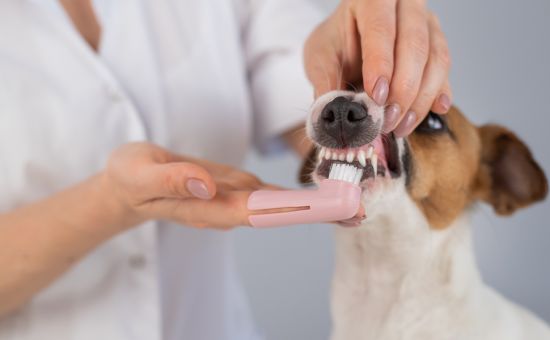
When should you clean your dog’s teeth?
Ideally you should clean your dog’s teeth every day. But even if you manage to brush your dog’s teeth two or three times a week, you will have done a great deal in terms of looking after your dog’s teeth and ensuring good dental hygiene.
The key thing to remember is prevention is better than a cure!
By making sure your dog’s teeth get tip-top care, you can help avoid dental problems developing in the first place.
However, at the very least, the following warning signs require closer consideration:
- Does your dog seem subdued?
- Is he refusing food or only eating reluctantly and with difficulty?
- Is he rubbing his muzzle?
- Yelping when eating?
- Bad breath?
... in which case, it is high time for a dental check-up! The best approach is to consult a vet.
Is dry food good for dental care?
Noticed something stinky? Bad breath in dogs can be a sign of tartar. These deposits on teeth are caused by a build-up of plaque and are more common in dogs than tooth decay. Tartar provides an excellent breeding ground for bacteria, which in turn can cause gum inflammation and periodontitis.
As well as regular cleaning using a toothbrush, you can improve your dog’s dental hygiene with the right food. Dry food ensures abrasion when chewing (which reduces dental plaque) and stimulates saliva production. This can help prevent the build-up of tartar.
Dry food should not contain any sugar, as this would be detrimental to your dog’s teeth and health.
Make sure your dog always has access to fresh drinking water. Water also helps keep teeth healthy!
Also suitable for dental hygiene are dog chews and other snacks that your dog gnaws on for as long as possible. The longer the dog chews, the greater the abrasion and the more saliva that is produced —keeping pathogenic bacteria and harmful plaque at bay!
Professional teeth cleaning for dogs?
Just like humans, dogs can get their teeth professionally cleaned. If plaque has already built up on the teeth or if the gums are inflamed, it is worth visiting your vet. He or she will be able to carry out professional teeth cleaning to prevent any further deterioration in the condition of your dog’s teeth.
A professional clean also works as a preventative option. It stops harmful deposits building up in the first place.
Household remedies to clean your dog’s teeth — can they combat tartar?
The range of options on sale is enormous: tartar removers to eliminate this harmful deposit, gels and sprays to break down tartar in dogs, dental hygiene toys for dogs, and even anti-plaque powder. But opinion is divided when it comes to these dental care products — we recommend trying them out yourself to find out what works best for you and your dog. Ultimately, some dogs are far from keen to undergo a protracted tartar scraping process by their owner, while others despise dental hygiene balls, and some are not remotely convinced by the taste of anti-plaque powder. The only answer is to try things out then pick and choose accordingly. The main thing is clean teeth!
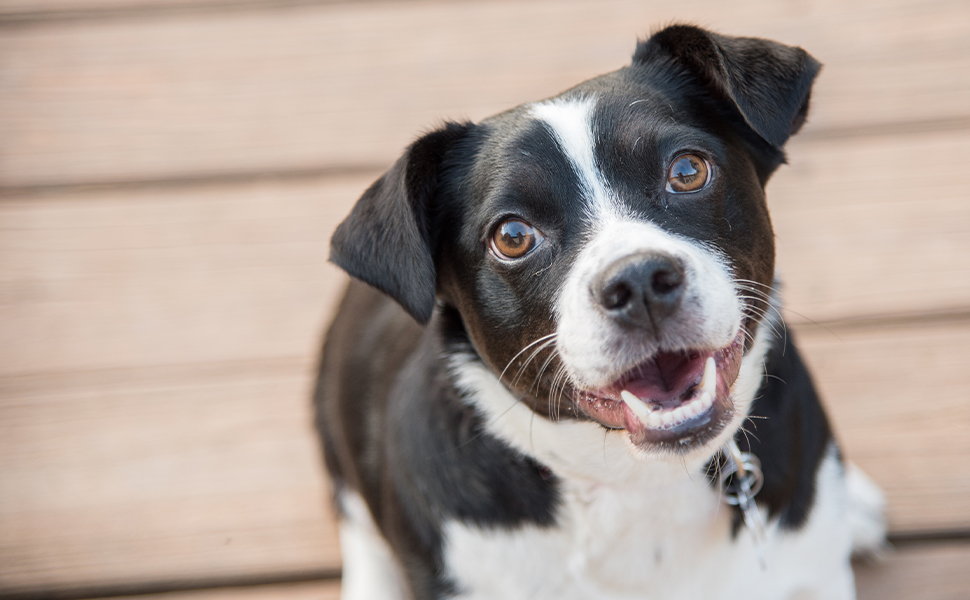
Baking powder & lemon
We do not recommend homemade remedies such as baking powder with lemon juice: for one thing, most dogs are not at all keen on the taste of baking powder, and if swallowed it can disrupt the acidity balance in the digestive tract. The same is true for lemon.
Cottage cheese
On the other hand, cottage cheese could be a useful household remedy to combat tartar in dogs: it neutralises the bacteria in the dog’s mouth, thus reducing the formation of plaque. However, if your dog does not tolerate lactose particularly well, it is best to look for an alternative.
And what about tooth decay in dogs?
Luckily tooth decay is less common in dogs than it is in humans. Having said that, allowing plaque to build up or offering food containing sugar can still produce dental decay in dogs, resulting in unpleasant holes in the teeth. If tooth decay is spotted early, the treatment is similar to the familiar approach that dentists use on humans: holes will be treated and filled, and harmful bacteria prevented from spreading. If left untreated, tooth decay can result in inflammation that affects the jaw and can even harm the organs. That is why you should get your dog's teeth checked and looked after regularly.
IN SUMMARY
Genuinely 42 teeth? That’s with a complete healthy set, assuming your dog has no plaque or tooth decay. Damage to the teeth or gums can impact your dog’s mood because healthy teeth are such an important tool for them – and if left untreated this can become a real health risk. With regular teeth cleaning, dental care products, well-balanced dry food and fresh water you can keep harmful germs and bacteria at bay.



